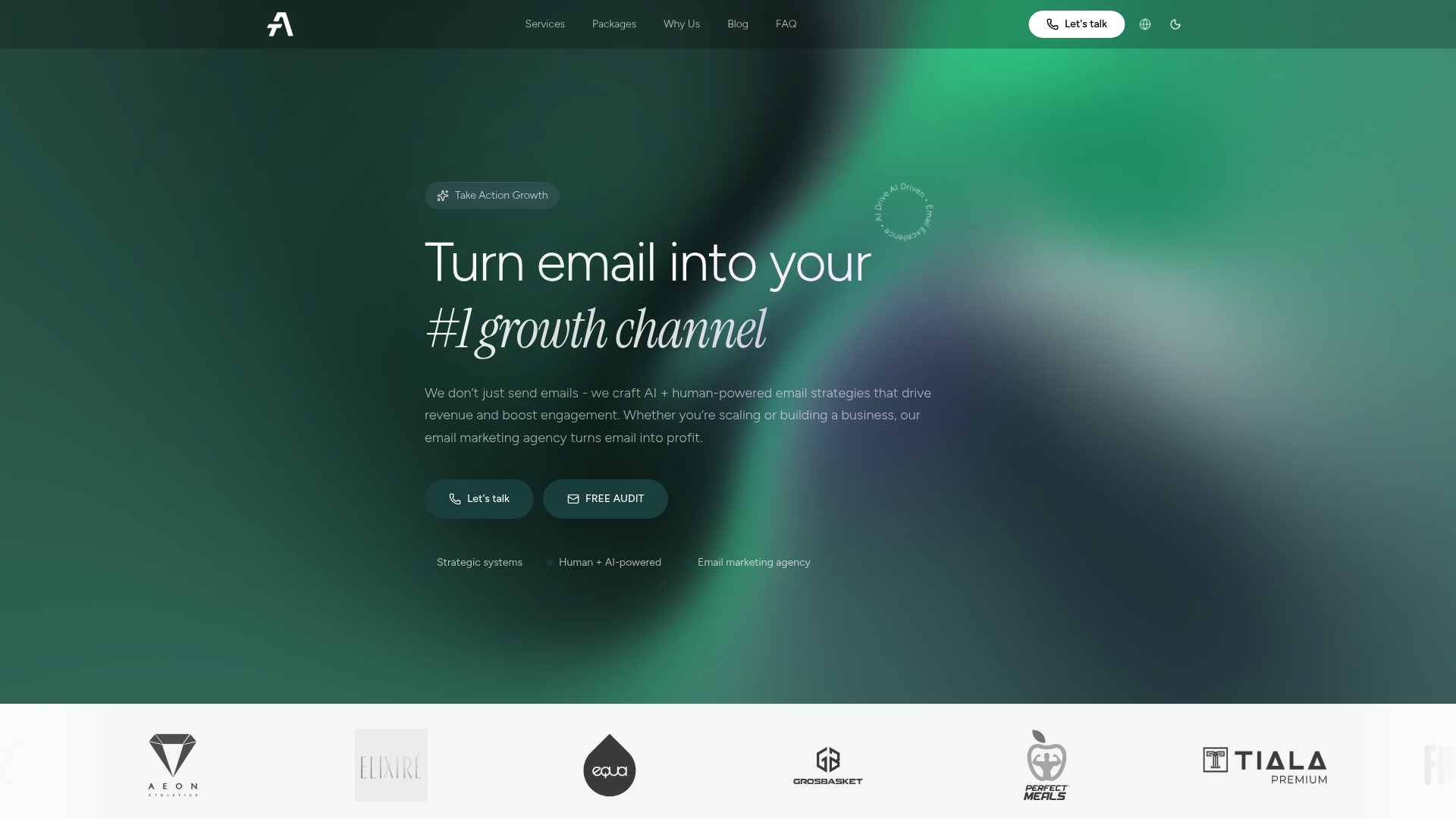Building Brand Awareness for Ecommerce Success: Step by Step
Did you know that brands with a consistent voice are over 3 times more likely to enjoy excellent brand visibility? In a world where shoppers face countless choices, capturing their attention—and earning their trust—has never been tougher. Learning how to define your brand’s personality, segment your audience, and embrace smart automation will set you apart and bring your ecommerce marketing to life.
Table of Contents
- Step 1: Define Your Brand Voice And Unique Value
- Step 2: Segment Audiences For Targeted Messaging
- Step 3: Automate Impactful Brand Email Flows
- Step 4: Launch Strategic Email Campaigns For Visibility
- Step 5: Analyze Campaign Data To Optimize Awareness
Quick Summary
| Key Point | Explanation |
|---|---|
| 1. Define Your Brand Voice | Create a brand voice document to ensure consistent communication across channels and build customer trust. |
| 2. Segment Your Audience | Break your audience into meaningful groups to tailor messaging and enhance engagement for better conversion rates. |
| 3. Automate Email Flows | Implement automated email sequences that address customer behaviors to deliver timely, personalized communications. |
| 4. Launch Strategic Campaigns | Develop targeted email campaigns that align with business goals and use data-driven insights for better customer connections. |
| 5. Analyze Campaign Data | Regularly review key performance indicators to refine strategies and improve the effectiveness of your marketing efforts. |
Step 1: Define your brand voice and unique value
Defining your brand voice and unique value transforms your ecommerce business from just another online store to a memorable customer destination. This critical step helps you stand out in an increasingly crowded digital marketplace.
Start by deeply understanding what makes your brand special. Ask yourself fundamental questions: What problem do you solve for customers? What values drive your business? What emotional connection do you want to create?
Your brand voice emerges from these core insights. According to research from Understanding the Importance of Brand Voice for eCommerce, a well-defined brand voice enables consistent communication across marketing channels and builds customer trust.
To develop your unique voice, create a brand personality document. Consider these key elements:
Here’s a summary of key elements to include in your brand personality document:
| Element | Description | Example Options |
|---|---|---|
| Tone | Overall mood and attitude | Professional Playful Inspirational |
| Language Style | Level of formality and complexity | Technical Casual Poetic |
| Core Values | Guiding beliefs and principles | Sustainability Innovation Trust |
| Emotional Resonance | Feelings you aim to evoke | Comfort Excitement Loyalty |
| Audience Preferences | How your audience prefers to engage | Email Social Media Live Chat |
- Tone (professional, playful, inspirational)
- Language style (technical, casual, poetic)
- Core values
- Emotional resonance
- Target audience communication preferences
Write your brand voice guidelines as if you are crafting a character description. This helps ensure consistency whether you are writing product descriptions, social media posts, or customer emails.
Pro Tip: Your brand voice should feel authentic. Do not try to be something you are not. Customers can sense insincerity instantly.
Remember that your unique value proposition is the promise you make to customers. It answers the critical question: Why should someone choose your brand over competitors? Be specific about the tangible and emotional benefits you provide.
In the next step, you will learn how to transform these insights into compelling marketing messaging that attracts and retains customers.
Step 2: Segment audiences for targeted messaging
Audience segmentation is the strategic approach that transforms generic marketing into precision targeted communication. By dividing your customer base into specific groups, you create opportunities for more meaningful and effective interactions.
Research from What is Audience Segmentation? Understanding Its Importance reveals that effective segmentation allows ecommerce businesses to tailor messaging and offers to specific customer groups, significantly enhancing engagement and conversion rates.
To start segmenting your audience, collect and analyze customer data across multiple dimensions:
- Demographic information (age, location, gender)
- Purchase history and frequency
- Customer behavior on your website
- Engagement levels with previous marketing campaigns
- Interests and preferences
Utilize analytics tools and customer relationship management platforms to gather these insights. Look for patterns that help you understand different customer personas within your broader audience.

Pro Tip: Do not over segment. Create meaningful groups that are large enough to be statistically significant but specific enough to allow personalized targeting.
Consider creating three to five primary customer segments. Each segment should have distinct characteristics that inform how you communicate and what offers you provide.
For example, a segment of first time buyers might receive different messaging compared to loyal repeat customers. Your communication strategy will shift based on each group experiences and relationship with your brand.
In the next step, you will learn how to craft personalized messaging that resonates with each of these carefully defined audience segments.
Step 3: Automate impactful brand email flows
Automating email flows transforms your marketing from reactive to proactive. By creating strategic email sequences that respond to customer behaviors, you can deliver personalized experiences that feel timely and relevant.
According to research from Understanding the Benefits of Email Automation, leveraging automation allows ecommerce brands to deliver messages that dramatically improve customer engagement and drive sales.
Start by identifying key moments in the customer journey where automated emails can add value:
- Welcome series for new subscribers
- Abandoned cart reminders
- Post purchase follow up sequences
- Replenishment reminders for consumable products
- Birthday or anniversary celebrations
Each automated flow should have a clear purpose and provide genuine value to the recipient. Think beyond transactional communication and focus on building relationship and trust.
Pro Tip: Ensure your automated emails maintain your unique brand voice. Automation should not mean losing personality.
Design your email flows with a logical progression. The first email should acknowledge the specific trigger event, while subsequent emails provide additional context, social proof, or incentives to take action.
Utilize dynamic content and personalization tokens to make each automated message feel like a one to one communication. Include the customers name, reference their specific interactions, and showcase products relevant to their interests.
In the next step, you will learn how to craft compelling content that makes these automated email flows truly resonate with your audience.
Step 4: Launch strategic email campaigns for visibility
Launching strategic email campaigns is about transforming your communication from generic broadcasts to precision targeted conversations. This step helps you cut through the digital noise and create meaningful connections with your audience.
According to insights from Email Campaign Best Practices for 2025 Success, strategic campaigns leverage segmentation and personalization to dramatically enhance customer engagement and brand visibility.
Design your campaign strategy around these key principles:
- Align campaign goals with specific business objectives
- Match messaging to distinct audience segments
- Create a compelling narrative across multiple email touchpoints
- Use data driven insights to refine your approach
- Measure and iterate based on performance metrics
Start by mapping out a campaign timeline that tells a coherent story. Your emails should feel like chapters in a narrative that progressively builds interest and trust.
Pro Tip: Think of each email as a conversation. Would you want to receive this message? If not, redesign it.
Incorporate visual storytelling elements that reinforce your brand identity. Use consistent color schemes, imagery, and tone that reflect your unique brand personality.
Track key performance indicators like open rates, click through rates, and conversion metrics. These insights will help you continuously optimize your email campaigns for maximum impact.
In the next step, you will learn how to analyze and refine your email marketing strategies for sustained growth.
Step 5: Analyze campaign data to optimize awareness
Analyzing campaign data transforms raw numbers into actionable insights that can dramatically improve your brand visibility and marketing effectiveness. This critical step helps you understand what truly resonates with your audience.
Understanding the Importance of Marketing Analytics reveals that continuous performance analysis allows businesses to refine strategies and ensure marketing messages effectively reach target audiences.
Focus on these key performance indicators when analyzing your email campaigns:
- Open rates
- Click through rates
- Conversion percentages
- Audience engagement duration
- Segment specific response metrics
Create a dashboard that tracks these metrics over time. Look for patterns that reveal which content types generate the most interest and which audience segments respond most enthusiastically.
Pro Tip: Do not just collect data. Interpret it. Numbers without context are just numbers.
Compare your campaign performance across different audience segments. Identify which messaging approaches generate the highest engagement and which fall flat.
Utilize A B testing to experiment with different subject lines, content styles, and visual elements. Small tweaks can produce significant improvements in audience response.
Remember that data analysis is an ongoing process.
Commit to reviewing your metrics regularly and being willing to adapt your strategy based on what the numbers reveal.
In the final step, you will learn how to integrate these insights into a comprehensive brand awareness strategy that drives sustainable growth.
Turn Your Brand Awareness Strategy Into Measurable Growth with Take Action
Building strong brand awareness in ecommerce comes with challenges like defining a unique voice, segmenting audiences effectively, and automating personalized email flows. You may feel overwhelmed trying to maintain consistency across campaigns while optimizing open rates and conversions. At the same time you want your brand message to emotionally connect and drive sustained engagement without losing authenticity.
Take Action specializes in helping ecommerce brands like yours solve these exact challenges. We combine human expertise with AI-driven insights to deliver data-backed email marketing strategies that align perfectly with your brand voice. From setting up automated flows such as welcome series and abandoned cart reminders to designing strategic campaigns that resonate with each customer segment, we focus on unlocking new revenue streams and increasing retention.
Ready to transform your brand awareness initiatives into a primary growth channel?
Boost your efforts now by visiting Take Action to see how our Klaviyo-focused automation services bring your step-by-step brand building to the next level.

Discover tailored campaign strategies, expert email flow setups, and long-term partnership benefits. Visit Take Action and start turning your ecommerce brand awareness into measurable results today.
Frequently Asked Questions
How can I define my brand voice for ecommerce success?
Start by identifying what makes your brand unique and the emotional connection you want to create with your audience. Write a brand personality document that includes tone, language style, core values, emotional resonance, and audience preferences to ensure consistency across all communications.
What is audience segmentation and why is it important for my ecommerce business?
Audience segmentation divides your customer base into specific groups based on characteristics such as demographics and purchase history. This enables you to tailor your messaging and marketing efforts, ultimately enhancing engagement and increasing conversion rates within a few campaigns.
How do I set up automated email flows to boost brand awareness?
Identify key moments in the customer journey, such as welcome emails or abandoned cart reminders, and create automated sequences around them. Ensure these emails are personalized and maintain your brand voice to build trust and engagement with your audience.
What are the key components of a strategic email campaign for ecommerce?
Design your email campaign around clear goals that align with business objectives, and ensure your messaging corresponds to specific audience segments. Create a coherent narrative across emails, using data to refine your approach and measure performance metrics like open and click-through rates.
How can I analyze my email campaign data to improve brand visibility?
Focus on key performance indicators such as open rates and conversion percentages to identify successful content and audience segments. Use A/B testing to experiment with variables in your emails and commit to regular reviews of your data—aim to enhance your engagement by at least 10% after each analysis.
What steps should I take to develop a unique value proposition for my ecommerce brand?
Craft a value proposition that clearly communicates why customers should choose your brand over competitors. Specify the tangible benefits you provide as well as the emotional connections you aim to foster, and revisit this statement regularly—at least once a quarter—to ensure it remains relevant.
Recommended
- Mastering Brand Positioning Strategies for Ecommerce Success | Take Action Blog | Take Action
- Complete Guide to SEO for Ecommerce Stores | Take Action Blog | Take Action
- 7 Branding Mistakes to Avoid for Your Ecommerce Brand | Take Action Blog | Take Action
- 7 Must-Read Business Book Recommendations for Ecommerce Growth | Take Action Blog | Take Action
- Maximize Sales with Content Marketing for Ecommerce
- Branding Process for Lifestyle Brands: Step-by-Step Success – Lind Creative
